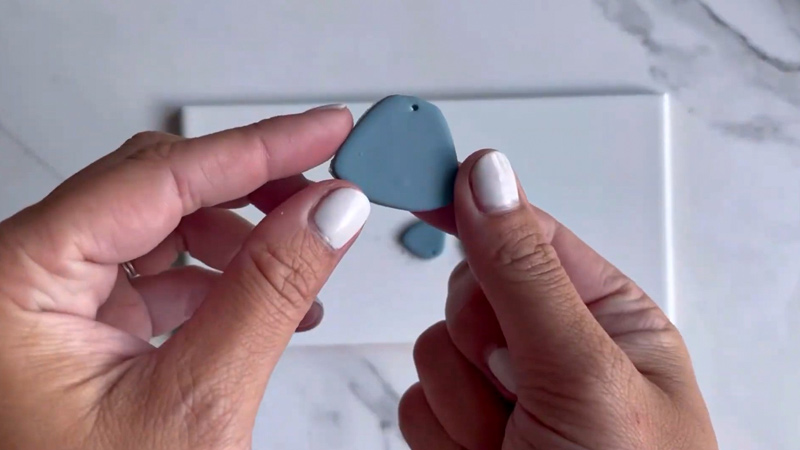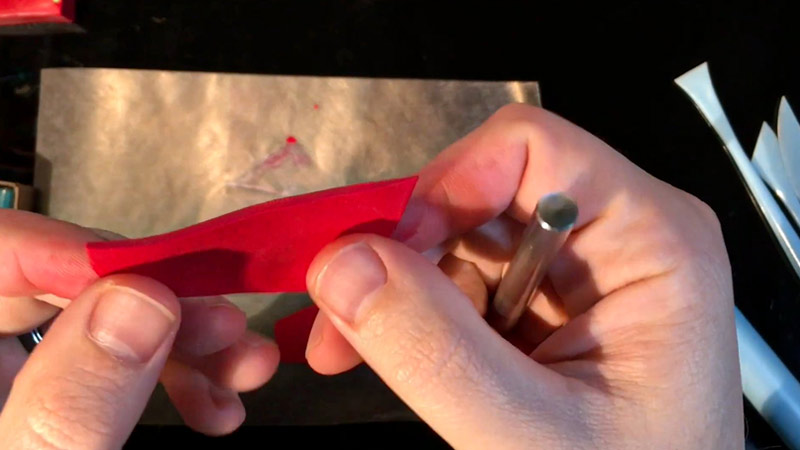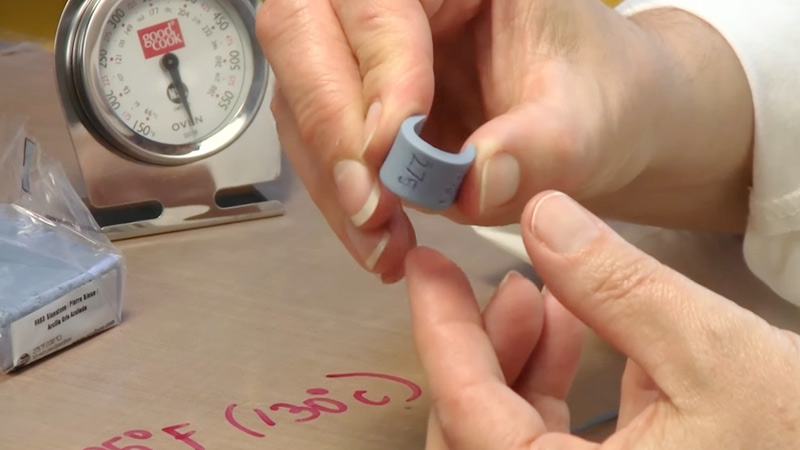The world of polymer clay crafting unveils many techniques, and one commonly asked question is, “Can you bake polymer clay twice?”
This query arises when artists aim to add intricate details or layers to their creations after the initial baking. Baking polymer clay multiple times offers versatility and allows for constructing complex, multi-layered projects.
This flexibility enables crafters to refine and enhance their creations, contributing to the overall depth and intricacy of the finished piece.
Understanding the nuances of double baking ensures that artists can confidently embark on projects that demand additional layers or modifications, unlocking new dimensions in the realm of polymer clay artistry.

Can You Bake Polymer Clay Twice?
Yes, you can bake polymer clay more than once, a technique often called “double baking.” When crafting intricate or layered polymer clay creations, it’s common to bake the piece initially to set the base and then add additional details or layers.
After incorporating these elements, the clay can be baked again to ensure the new additions are properly cured.
However, following the recommended baking instructions for the specific type of polymer clay you are using is essential, as over-baking may result in discoloration or other undesired effects.
With proper temperature control and timing, double baking allows for creating complex and detailed polymer clay projects.
Can You Overbake Polymer Clay?
Yes, it is possible to overbake polymer clay. Overbaking occurs when the clay is subjected to a temperature higher than the recommended curing temperature or when it is baked for an extended period.
Polymer clay has specific curing guidelines, and exceeding these can lead to issues such as discoloration, brittleness, and a change in texture.
Overbaked clay may become too hard, lose its vibrancy, or even burn, affecting the overall quality of your creation.
It’s crucial to adhere to the recommended baking instructions the polymer clay manufacturer provides to ensure a successful and visually appealing outcome.
To avoid overbaking, use an oven thermometer to monitor temperature accuracy and strictly follow the suggested baking times.
What Happens If You Over-Bake Polymer Clay?

Overbaking polymer clay can lead to several undesirable consequences, affecting your creations’ appearance and integrity. It’s crucial to follow recommended baking guidelines to ensure optimal results.
Here are seven consequences of overbaking polymer clay:
Discoloration
Overbaking can cause polymer clay to change color, often resulting in a darker or burnt appearance. This can significantly impact the intended aesthetic of your project.
Brittleness
Polymer clay that has been overbaked tends to become brittle and more prone to breakage. This compromises the structural integrity of your creation, making it susceptible to damage.
Texture Changes
The texture of polymer clay may undergo alterations when overbaked, leading to a harder and less pliable consistency. This can affect the clay’s ability to hold intricate details and shapes.
Loss of Vibrancy
Overbaking can diminish the vibrancy of the colors in polymer clay. Bright and vibrant hues may fade or become muted, resulting in a less visually appealing finished product.
Burning Smell
Overbaking polymer clay may produce a noticeable burning smell. This unpleasant odor indicates that the clay has been subjected to temperatures beyond its recommended limit.
Surface Cracking
Excessive heat during overbaking can cause the surface of polymer clay to develop cracks. These cracks compromise the smooth finish of your creation, affecting its overall aesthetics.
Adhesive Failure
Overbaking may weaken the bond between different components or layers of polymer clay. This can result in parts separating or detaching, leading to structural issues in your project.
To avoid these consequences, it’s essential to carefully monitor baking temperatures and adhere to recommended curing times for the specific type of polymer clay being used.
These precautions ensure a successful and visually pleasing outcome for your polymer clay creations.
Can You Bake Sculpey Twice?

You can bake Sculpey, a type of polymer clay, multiple times. Baking Sculpey twice or more is common when working on intricate or layered projects.
The initial bake sets the foundation, allowing you to add additional details, colors, or components to your creation.
After incorporating these elements, you can bake the Sculpey again to ensure proper curing of the newly added parts.
It’s essential to follow the recommended baking instructions provided by the manufacturer, including temperature and duration, to achieve the best results.
Double-baking Sculpey is a versatile technique that allows artists and crafters to build complex and detailed sculptures without compromising the integrity of the finished piece.
Is Polymer Clay Toxic After Baking?
Polymer clay is generally considered non-toxic after baking when used according to the manufacturer’s instructions. Once properly cured in the oven, polymer clay undergoes a chemical transformation that makes it safe for handling.
However, it’s crucial to follow safety guidelines during baking, ensuring adequate ventilation by using a well-ventilated space or a dedicated oven.
Additionally, it’s recommended to avoid using the same oven for both polymer clay and food. While the cured polymer clay itself is not toxic, some precautions should be taken to minimize any potential risks associated with handling and baking.
Always consult the specific safety guidelines the polymer clay manufacturer provides to ensure a safe and enjoyable crafting experience.
What Is Idle Polymer Clay Baking Time?
There isn’t a specific term known as “idle polymer clay baking time” in the context of polymer clay crafting.
Generally, when working with polymer clay, the term “baking time” refers to the duration the clay spends in the oven to cure and harden.
During this time, the clay undergoes a chemical reaction that transforms it from a pliable state to a durable, solid form.
It’s crucial to adhere to the recommended baking times the polymer clay manufacturer provides for optimal results.
If you’re not actively working on your clay project, there is no specific “idle baking time.” Once the clay is cured, it can be stored or manipulated without additional baking.
FAQs
Does double baking affect the strength of polymer clay?
When done correctly, double baking doesn’t compromise the strength of polymer clay. Following recommended baking temperatures and times is essential to ensure proper curing without overbaking.
After the first bake, can I add more details to my polymer clay creation?
Absolutely. Double baking allows you to incorporate additional details, colors, or elements to enhance your polymer clay projects.
Are there specific precautions for double-baking polymer clay?
While double baking is common, it’s crucial to avoid overbaking. Follow the manufacturer’s guidelines on temperature and duration, and refrain from exceeding recommended limits.
Can you bake different colors of polymer clay together during double baking?
You can bake different colors together during double baking if they have similar curing temperatures. This allows for seamless integration of various colors in a single session.
Does double baking affect the texture of polymer clay?
Properly executed double baking generally does not adversely affect the texture of polymer clay. However, monitoring baking conditions to prevent overcuring and maintain the desired consistency is important.
Conclusion
The ability to bake polymer clay twice is a valuable aspect of the crafting process. Whether adding intricate details, incorporating different colors, or refining existing elements, double baking allows artists to achieve their desired vision.
This technique showcases the adaptability of polymer clay, transforming it into a versatile medium for creating intricate and multi-dimensional artworks.
By carefully following recommended baking instructions, crafters can confidently explore the possibilities of double baking, elevating their polymer clay projects to new levels of complexity and sophistication.
Leave a Reply